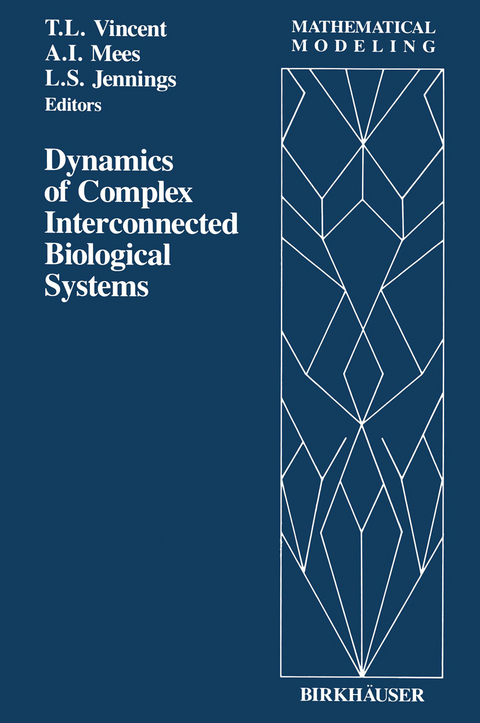
Dynamics of Complex Interconnected Biological Systems
Springer-Verlag New York Inc.
978-1-4684-6786-4 (ISBN)
This volume contains the proceedings of the U.S. Australia workshop on Complex Interconnected Biological Systems held in Albany, Western Australia January 1-5, 1989. The workshop was jointly sponsored by the Department of Industry, Trade and Commerce (Australia), and the Na tional Science Foundation (USA) under the US-Australia agreement. Biological systems are typically hard to study mathematically. This is particularly so in the case of systems with strong interconnections, such as ecosystems or networks of neurons. In the past few years there have been substantial improvements in the mathematical tools available for study ing complexity. Theoretical advances include substantially improved un derstanding of the features of nonlinear systems that lead to important behaviour patterns such as chaos. Practical advances include improved modelling techniques, and deeper understanding of complexity indicators such as fractal dimension. Game theory is now playing an increasingly important role in under standing and describing evolutionary processes in interconnected systems. The strategies of individuals which affect each other's fitness may be incor porated into models as parameters. Strategies which have the property of evolutionary stabilty result from particular parameter values which may be the main feature of living determined using game theoretic methods. Since systems is that they evolve, it seems appropriate that any model used to describe such systems should have this feature as well. Evolutionary game theory should lead the way in the development of such methods.
I Modelling.- Modelling Biological Systems.- A Length-Structured Model of the Western Rock Lobster Fishery of Western Australia.- Legumes at Loggerheads: Modelling Competition Between two Strains of Sub-Clover.- Two Dimensional Pattern Formation in a Chemotactic System.- Mathematical Modelling of the Control of Blood Glucose Levels in Diabetics by Insulin Infusion.- II Tools.- Modelling Complex Systems.- Detecting Folds in Chaotic Processes by Mapping the Convex Hull.- Chaos in Complex Systems.- A Chaotic System: Discretization and Control.- Impulsive Evolution Equations and Population Models.- Scaling as a Tool for the Analysis of Biological Models.- A Numerical Algorithm for Constrained Optimal Control Problems with Applications to Harvesting.- III Games.- Strategy Dynamics and the Ess.- Community Organization under Predator-Prey Co-Evolution.- The Exploiters Conservationists Game: how to be an Effective Conservationist.- Analysing the Harvesting Game or why are there so Many Kinds of Fishing Vessels in the Fleet?.
| Erscheint lt. Verlag | 14.3.2012 |
|---|---|
| Reihe/Serie | Mathematical Modeling ; 6 |
| Zusatzinfo | XII, 334 p. |
| Verlagsort | New York |
| Sprache | englisch |
| Maße | 155 x 235 mm |
| Themenwelt | Mathematik / Informatik ► Informatik ► Theorie / Studium |
| Informatik ► Weitere Themen ► Bioinformatik | |
| Mathematik / Informatik ► Mathematik ► Algebra | |
| Mathematik / Informatik ► Mathematik ► Angewandte Mathematik | |
| Naturwissenschaften ► Biologie | |
| ISBN-10 | 1-4684-6786-7 / 1468467867 |
| ISBN-13 | 978-1-4684-6786-4 / 9781468467864 |
| Zustand | Neuware |
| Haben Sie eine Frage zum Produkt? |
aus dem Bereich


